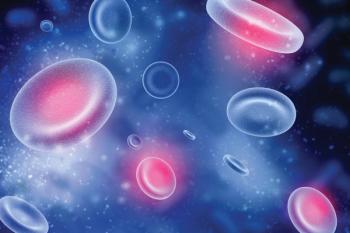
Three new studies confirm cancer outcomes related to insurance, race, income
Researchers find that patients lacking private health insurance or are poor or black fare worse than other cancer patients.
Researchers find that patients lacking private health insurance or are poor or black fare worse than other cancer patients.
Lack of private health insurance made a marked difference in survival outcomes of women with uterine cancer, researchers from the American Cancer Society and the University of California, Irvine found.
“Uninsured and Medicaid and Medicare patients with uterine cancer are more likely to die within four years than privately insured patients,” stated lead researcher Stacey A. Fedewa, an epidemiologist at the ACS.
A retrospective analysis on 178,891 patients in the National Cancer Database showed that privately insured women had an unadjusted 4-year survival rate of almost 89%, compared with uninsured, approximately 81%; those on Medicaid, almost 76%; younger women insured through Medicare, 79%; and older women on Medicare, 69%.
Researchers also found that black women with uterine cancer had the lowest overall four-year survival rate, 63%, compared to whites and Hispanics, both 82%.
Some of the difference was due to access to care. Yet even taking treatment, insurance and other factors into account, black women still had a 32% greater risk of dying than white women.
The researchers find that other health factors, such as obesity and diabetes and cultural beliefs and quality of care, affect survival too.
In a second study, researchers led by Dr. Chyke Doubeni, an assistant professor of family medicine and community health at the University of Massachusetts Medical School, found that late-stage diagnosis of colon cancer was more common for residents of poor communities than for folks living in richer neighborhoods. The finding could explain higher death rates from colon cancer in disadvantaged areas, the researchers said.
By analyzing 6,934 cases of colorectal cancer included in a national study, the researchers found people in the poorest areas had a 13 percent greater incidence of colorectal cancer and 15 percent higher incidence of advanced colorectal cancer, compared with people in better-off areas. This held true even after taking into account education and other factors.
In a third report, a team led by Heather J. Hoffman, an assistant professor of epidemiology and biostatistics at George Washington University School of Public Health and Health Services, found that race played a larger role than insurance in getting a timely breast cancer diagnosis.
In a study of almost 1,000 women examined for breast cancer, white women with private insurance waited an average of 15.9 days between testing and diagnosis, while privately insured black women waited 27.1 days and Hispanics 51.4 days, the researchers found.
For women on Medicare or Medicaid, the wait between testing and diagnosis was 11.9 days for whites, 39.4 days for blacks and 70.8 days for Hispanics.
Amongst those without insurance, the wait was 44.5 days for whites compared with 59.7 days for blacks and 66.5 days for Hispanics.
Insurance affects the ability to obtain cancer screening and treatment, he said. But other barriers to care also exist, he added, pointing to cultural differences, health literacy, education.
And, while rarely overt, racism may be built into the health care system because the system fails to take racial and cultural differences into account, Carrasquillo added.
Newsletter
Stay up to date on recent advances in the multidisciplinary approach to cancer.



















































































